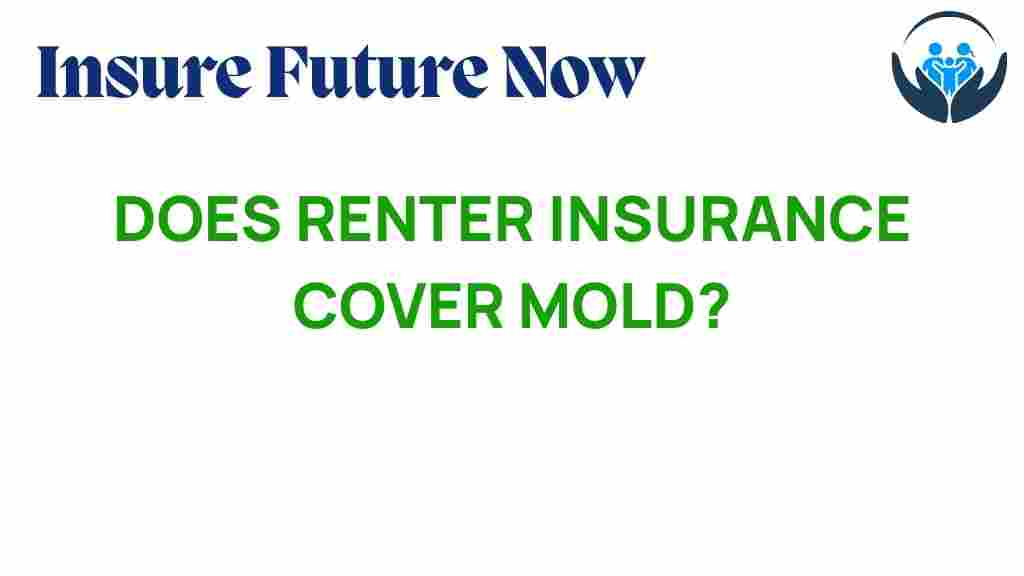Unveiling the Truth: Does Renter Insurance Cover Mold?
As a tenant, understanding your rights and the extent of your renter insurance coverage is crucial, especially when it comes to issues like mold. Mold can be a serious problem in rental properties, leading to health risks and property damage. This article will explore the specifics of mold coverage under renter insurance, helping you navigate your tenant protection options effectively.
Understanding Renter Insurance and Mold Coverage
Renter insurance is designed to protect tenants from various risks related to their personal property and liability. However, the level of coverage for mold can vary significantly between policies. Here are some key points to consider:
- Property Damage: Most renter insurance policies cover personal belongings damaged by certain perils, but mold damage may not always be included.
- Policy Details: It’s essential to read the fine print in your policy to understand what is covered and what is not regarding mold.
- Exclusions: Many policies exclude mold damage if it results from negligence or lack of maintenance.
Common Causes of Mold in Rental Properties
Mold can thrive in damp, humid environments. Common causes of mold growth in rental properties include:
- Water leaks from plumbing or roofs
- High humidity levels
- Poor ventilation
- Flooding
Understanding these causes can help tenants take preventive measures and identify when to file an insurance claim.
Filing Insurance Claims for Mold Damage
If you suspect that mold has damaged your personal belongings, follow these steps to file a claim:
- Document the Damage: Take photos of the moldy areas and any damaged items.
- Notify Your Landlord: Inform your landlord about the mold issue. They may be responsible for addressing the source of the moisture.
- Review Your Policy: Check your policy details to see if mold damage is covered.
- Contact Your Insurer: Call your insurance company to report the claim and provide the necessary documentation.
- Follow Up: Keep records of all communications and follow up on the status of your claim.
Tenant Protection and Rights Regarding Mold
As a tenant, you have certain rights when it comes to living in a safe and healthy environment. Here’s what you need to know:
- Right to a Healthy Living Environment: Tenants have the right to live in a property free from mold and other health hazards.
- Landlord Responsibilities: Landlords are typically responsible for maintaining the property and addressing mold issues promptly.
- Reporting Issues: Tenants should report mold problems to their landlords as soon as they are discovered.
Understanding Coverage Limits for Mold Remediation
Mold remediation can be expensive. Understanding the coverage limits of your renter insurance policy is essential:
- Personal Property Coverage: This usually includes a cap on how much you can claim for personal belongings.
- Liability Coverage: If mold causes health issues for others, liability coverage may come into play.
- Additional Living Expenses: If your home is uninhabitable due to mold, some policies may cover temporary housing costs.
Step-by-Step Process for Mold Remediation
If you discover mold in your rental unit, it’s important to act quickly. Follow these steps for effective mold remediation:
- Identify the Source: Determine where the moisture is coming from and address it immediately.
- Isolate the Area: Close off the affected area to prevent spores from spreading.
- Remove Affected Materials: Dispose of any materials that cannot be cleaned, such as carpets or drywall.
- Clean and Disinfect: Use mold-killing solutions to clean the remaining surfaces.
- Dry the Area: Ensure the area is thoroughly dried to prevent mold from returning.
Troubleshooting Tips for Mold Issues
Here are some troubleshooting tips to help you manage mold issues effectively:
- Monitor Humidity Levels: Use a dehumidifier to keep humidity under control, ideally between 30-50%.
- Check for Leaks: Regularly inspect your property for leaks or water damage.
- Improve Ventilation: Use exhaust fans in kitchens and bathrooms to reduce moisture.
- Regular Cleaning: Keep surfaces clean and dry to prevent mold growth.
For more detailed information on mold-related issues, you can visit this external resource that offers valuable insights and guidance.
Conclusion
Understanding whether your renter insurance covers mold is essential for effective tenant protection. While many policies may not cover mold damage, knowing your rights and responsibilities as a tenant can empower you to take the necessary steps to protect your health and property. Always review your policy details and communicate with your landlord promptly when mold issues arise. By being proactive, you can mitigate the risks associated with mold and ensure a safer living environment.
For further assistance or if you have specific questions regarding insurance claims related to mold, consider contacting your insurance provider or a legal expert in tenant rights.
This article is in the category Coverage and created by InsureFutureNow Team
